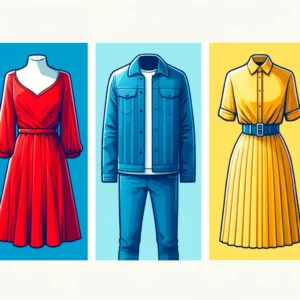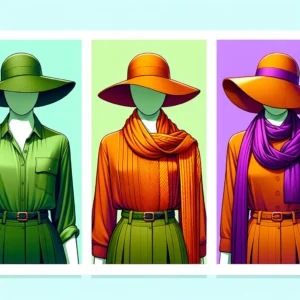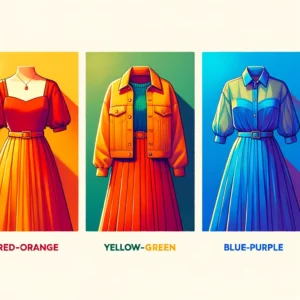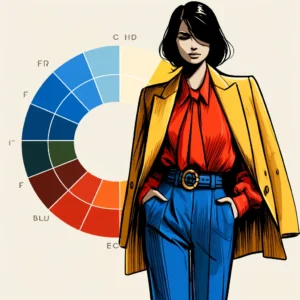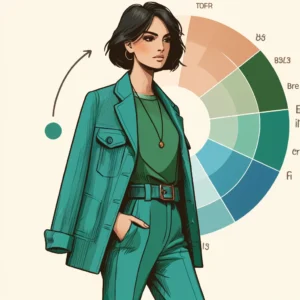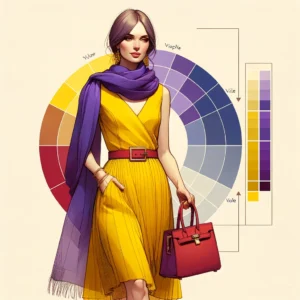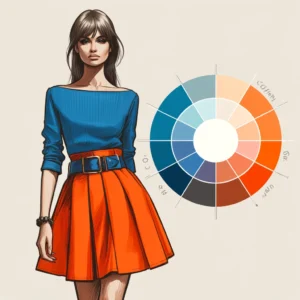
Color Wheel Basics for Fashion Design: A Quick Guide
info
May 11, 2024
Color Wheel Basics for Fashion Design: A Quick Guide
Introduction: Why Color Matters in Fashion
Color theory is foundational to fashion design. Understanding the color wheel for clothes not only enhances aesthetic appeal but also influences functionality and consumer behavior. This article explores how mastering the color wheel for clothes can revolutionize your approach, whether you’re a student, an aspiring designer, or an educator in the fashion industry. For instance, Zara’s use of vibrant colors in their summer collections consistently attracts a younger demographic, demonstrating the power of strategic color usage.
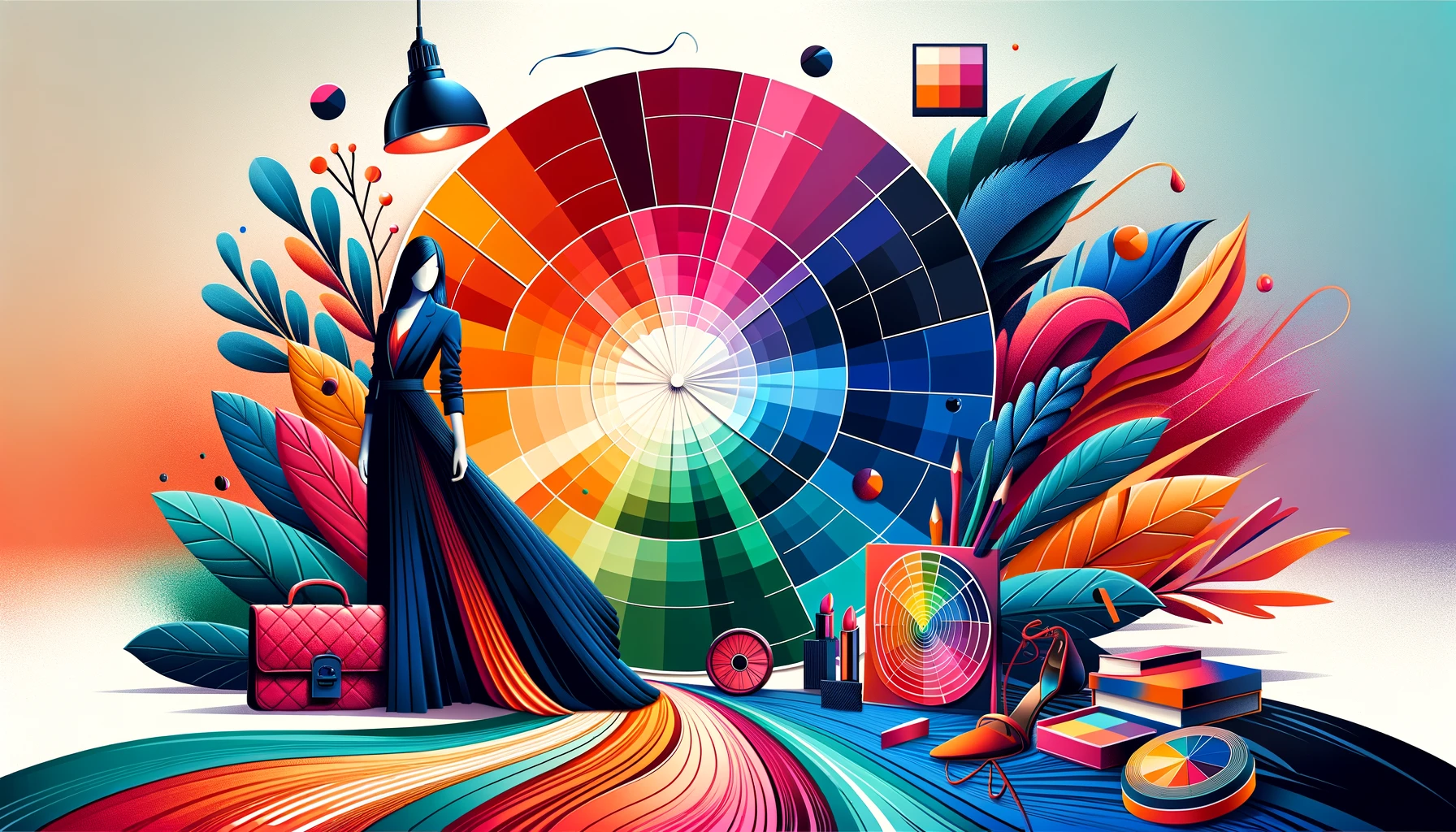
A Historical Perspective: The Evolution of Color in Fashion
Color theory has roots that extend back to the Renaissance, evolving significantly into what we know today in the fashion industry. Early uses of color were largely dictated by availability and dyeing techniques, but modern advancements have expanded the palette, allowing designers to manipulate color with precision. Figures like Sir Isaac Newton, who developed the first circular diagram of colors, have been pivotal in this evolution.
Understanding the Basics: The Color Wheel
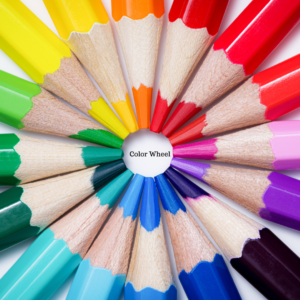
- Primary Colors: Red, blue, and yellow. These are the fundamental colors that cannot be created through the mixing of other colors. They form the base of the color wheel and are crucial in the creation of all other colors.
- Secondary Colors: Green, orange, and purple. These are created by mixing two primary colors. For example, green is made by mixing blue and yellow.
- Tertiary Colors: These are the result of mixing a primary color with a secondary color. Examples include red-orange, yellow-green, and blue-purple. Tertiary colors help refine the color wheel, providing more depth and options for designers.
The color theory wheel facilitates a comprehensive understanding of how colors interact, which is crucial in creating harmonious designs. Interactive tools such as Adobe Color provide a digital playground for designers to test these principles effectively.
Exploring Tints, Tones, and Shades: A Color Wheel Guide to Mastering Subtle Hues in Design
- Tints: Created by adding white to a pure color, increasing lightness.
- Tones: Produced by adding gray to a color, which alters the intensity and saturation.
- Shades: Made by adding black to a color, making it darker.

Understanding tints, tones, and shades is essential for designers to achieve the desired mood and depth in their collections.
Hue, Value, and Saturation: Decoding the Core Elements of Color Properties on the Color Wheel
- Hue: This is the color itself, the base pigment without any tint or shade. Hue is what distinguishes one color from another, such as red from blue.
- Value: This refers to how light or dark a color is. Adding white or black to a color alters its value, creating tints or shades respectively.
- Saturation: This describes a color’s intensity or purity. High saturation means the color is rich and vibrant, while low saturation results in a more muted, grayish tone.
Fashion Color Types: Staple, Neutral, and Fashion Colors
- Staple Colors: These are timeless colors that form the foundation of a wardrobe or collection. Black, white, and navy are typical staple colors due to their versatility and enduring appeal.
- Neutral Colors: These include beige, ivory, taupe, black, gray, and whites. Neutral colors are flexible and can be paired with almost any color in the design palette.
- Fashion Colors: These are trendy colors that come and go with fashion seasons. They are often dictated by current trends and are used to make fashion statements.
Exploring Color Harmonies
- Complementary Colors: Colors opposite each other on the wheel.
- Analogous Colors: Colors that sit side by side.
- Triadic Colors: Three colors evenly spaced around the wheel.
- Split-Complementary: A base color and two adjacent tertiary colors. This scheme offers a high contrast look but less tension than complementary colors.
- Tetradic (Double Complementary): Four colors arranged into two complementary pairs. This scheme offers plenty of variety in color choices.
These schemes are pivotal in designing collections that are visually cohesive yet striking. Missteps often occur when designers overly saturate a collection with complementary colors without considering balance, which can lead to visually jarring experiences. The color theory wheel provides a visual guide that makes it easier for designers to understand and apply color harmonies.
The Psychology of Color: Emotional and Cultural Significance
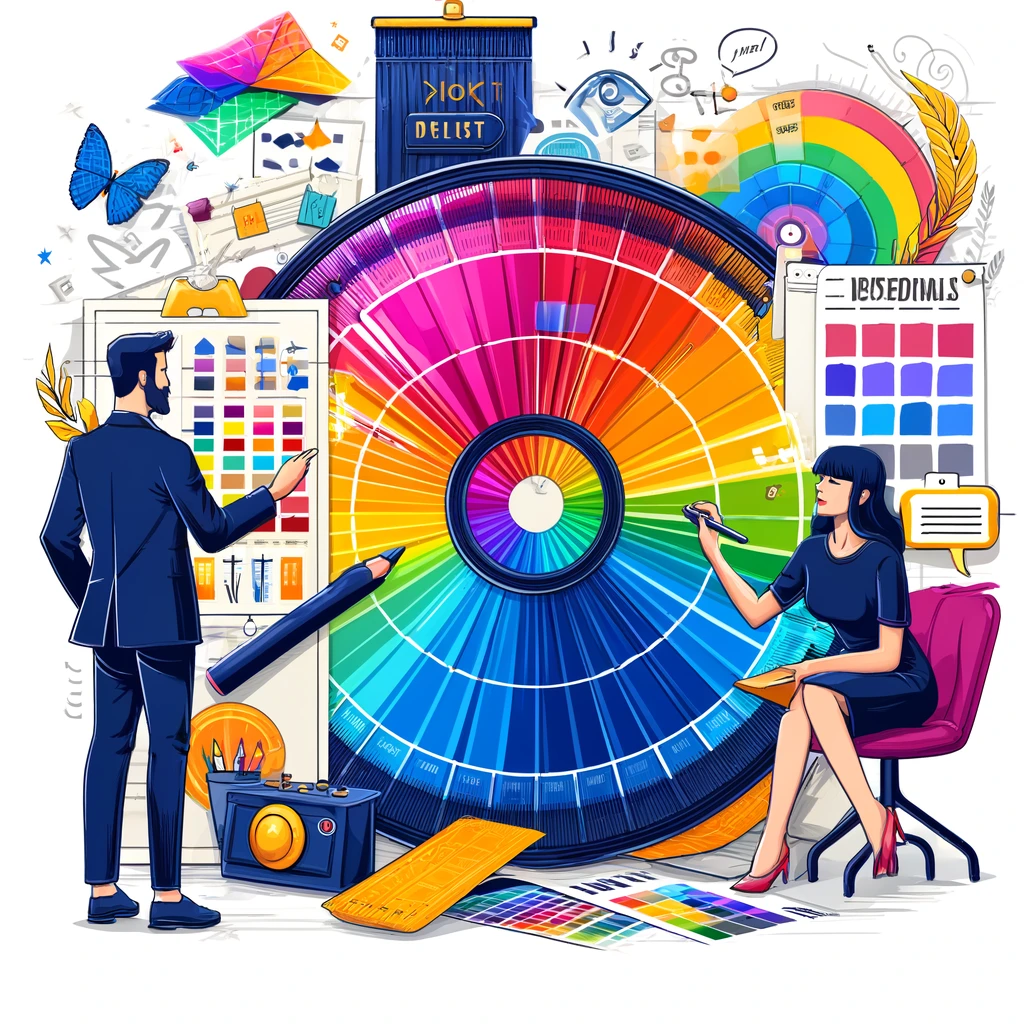
Colors evoke emotions—red can energize, while blue can soothe. Understanding these psychological impacts can empower designers to create pieces that resonate on a deeper level with their audience. Incorporating the color theory wheel in your designs ensures that these emotional connections are thoughtful and impactful.
Color Wheel Dynamics: Shaping Seasonal Color Trends and Palettes
Fashion isn’t static, and neither is the use of color. Seasonal shifts influence the palette, with lighter tones in spring and darker hues in winter, reflecting not just the designer’s vision but also consumer expectations and material availability. The knowledge of the color wheel for clothes helps designers choose appropriate seasonal colors that resonate with current trends and consumer expectations.
Forecasting: Predicting Color Trends
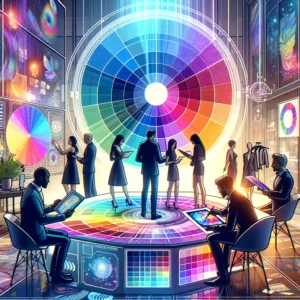
Trend forecasters play a critical role in predicting what colors will dominate the season. This foresight helps brands stay ahead, ensuring relevance and market success. Knowledge of the color wheel for clothes helps forecasters and designers stay aligned with upcoming trends.
Sustainable Practices: Color Wheel Theory and Eco-Friendliness
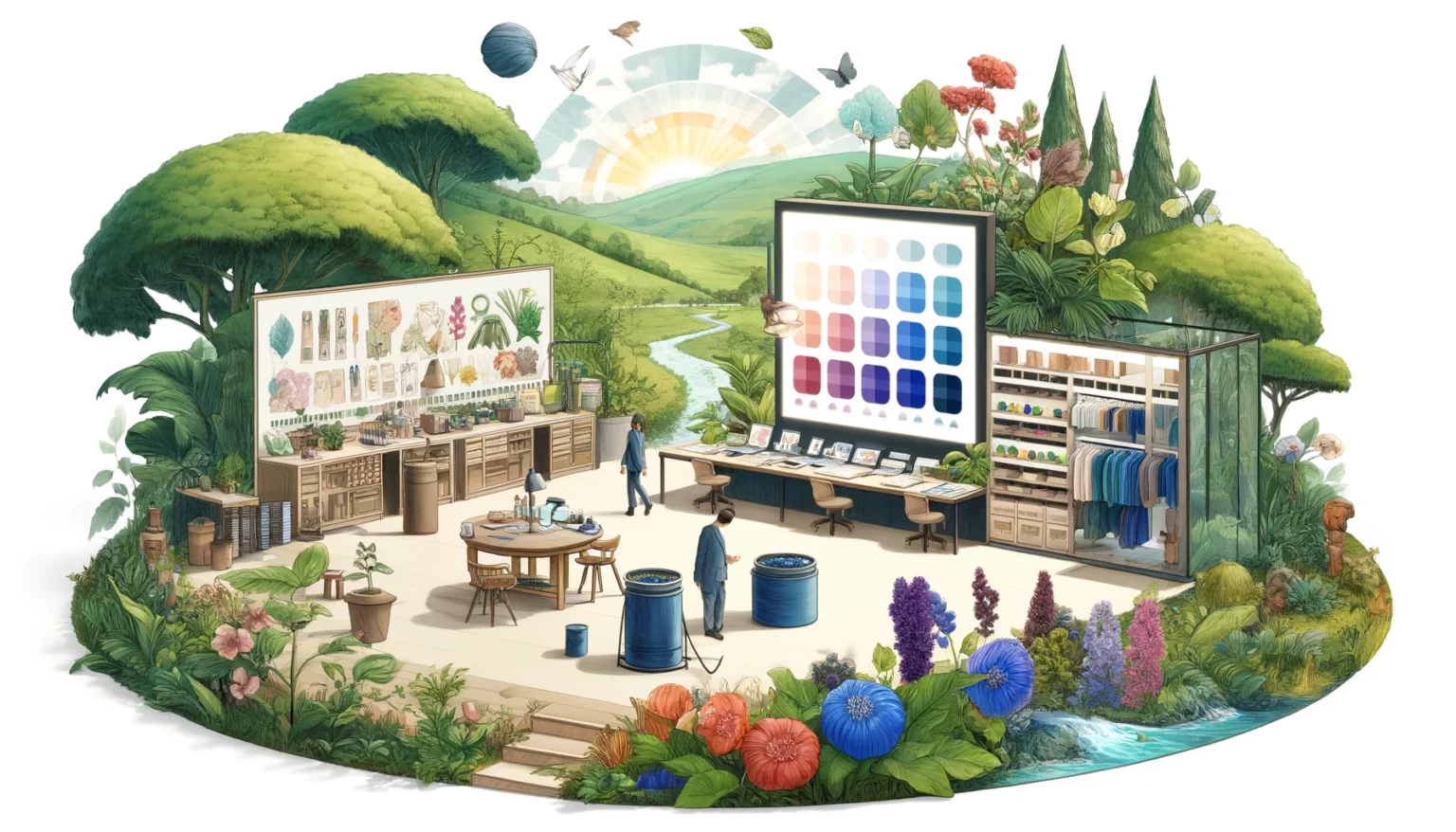
With an increasing shift towards sustainability, designers are challenged to integrate eco-friendly practices, from natural dyes to minimizing waste, while still achieving desired color effects. When applying sustainable practices in fashion design, understanding the color wheel for clothes is crucial in selecting eco-friendly dyes that do not compromise on vibrancy.
Tools of the Trade: Technology and Color Selection
Digital tools like Adobe Color and physical swatch books help designers achieve the perfect hue, ensuring that their vision is accurately translated into their designs. These tools often utilize the color theory wheel, making it easier for designers to select and combine colors efficiently.

Case Studies: Success Stories in Color Theory
Examining the collections of designers like Gucci and Chanel reveals how effectively applied color theory can lead to commercially successful and aesthetically pleasing collections. In reviewing successful fashion lines, the application of the color theory wheel is often evident, showing how strategic color choices can enhance a brand’s appeal.
Conclusion: Mastering Color for Design Excellence
Understanding and applying color theory is not just about making clothes look good—it’s about communicating through color, evoking emotions, and achieving strategic business outcomes. For anyone serious about fashion design, mastery of the color wheel for clothes is not just beneficial; it’s essential.
Ready to transform your design perspective? Dive deeper into our resources or sign up for our newsletter for more insights into mastering fashion design. Whether you’re refining your current collections or brainstorming your next big project, a deep understanding of the color theory wheel can be your key to success. Join our community of vibrant creators, and let’s color the world with innovation and style.
Recent Post

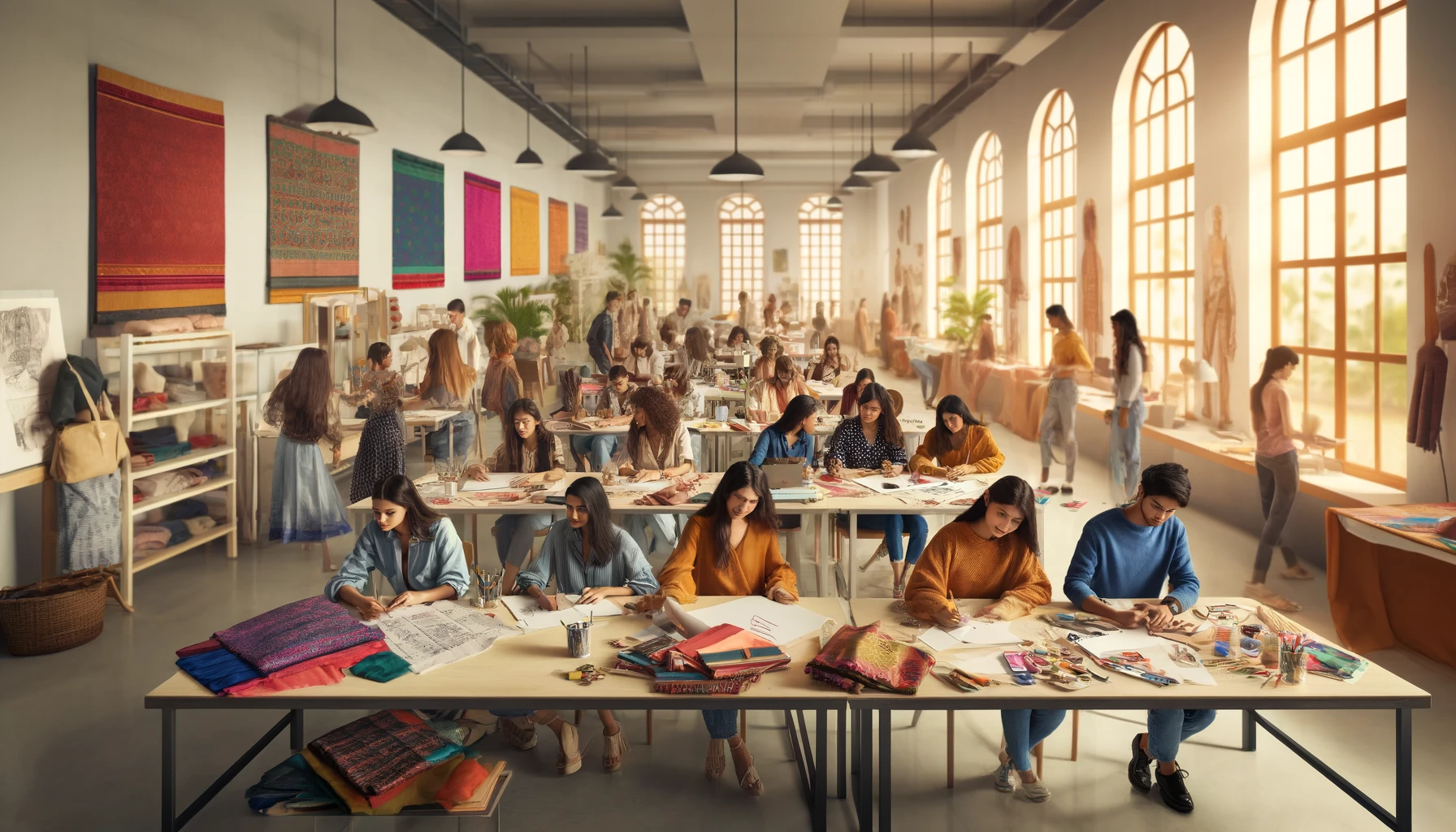

Dont Hesitate To Contact Us
Connect for inquiries, guidance, or to commence your educational journey. We are here to assist you.
Categories
Subscribe Our Newsletter
Stay updated. Subscribe to our newsletter for the latest trends, events, and exclusive insights delivered to your inbox
About Us
Discover excellence at Leela Institute of Professional Studies, Jaipur – the premier Fashion & Design Institute since 2013. Offering on-campus and online courses in Fashion, Interior, Graphic, Jewelry Design, Website Design, and Digital Marketing.
Quick Links
Work Hours
- Mon - Fri
- Sat - Sun
- 09.30 AM - 04.00 PM
- Closed


